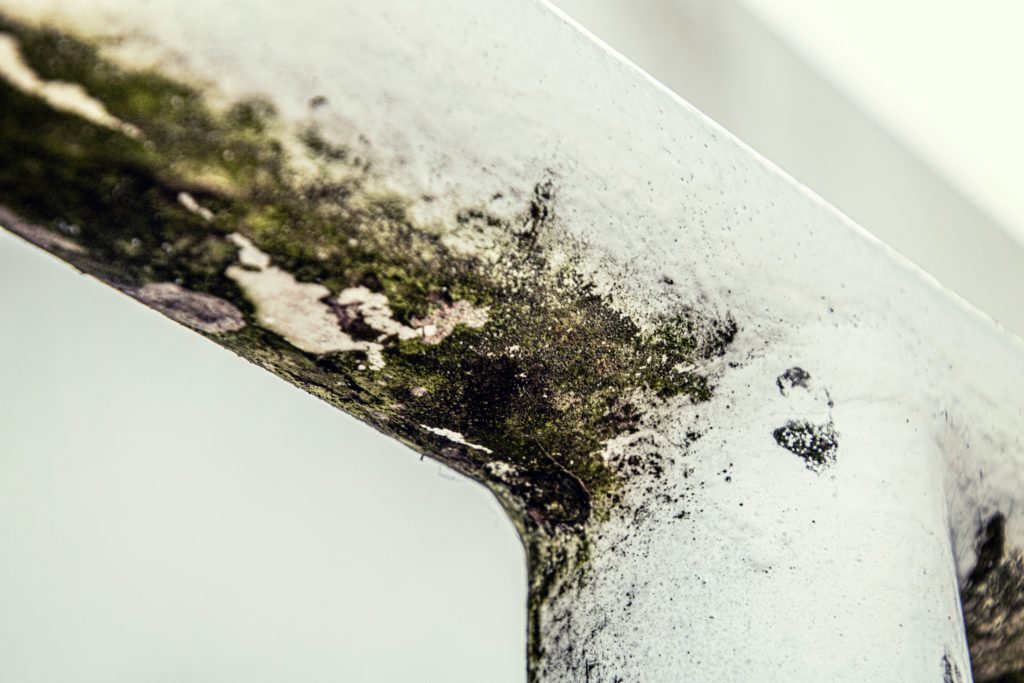
Gab Learns – Humidity & Mould (again)
It’s mould awareness time again, we dive back in to discuss mould and humidity and to find out how we can remain comfortable in our homes. We’re all sick – colds, flus, allergies – but we are ready to talk about mould and humidity again. We love this topic because we love educating people about mould, so they can spot it know how to rid it from their homes.
What do you need for mould?
There are three components mould needs to grow:
- Moisture
- Heat/temperature
- Food (not necessarily real food; sources like paper, dust, wood will do fine for mould)
If one of these three components is removed, mould does not grow.
Is mould a seasonal thing? Why do we see mould so much more in winter?
We see mould more in winter because of the temperature and humidity – In a temperate climate, these are right at the intersection where condensation forms. In the winter in New Zealand, especially Auckland, the outside air is quite humid (around 80% – 90% humidity). If that air comes into your home, it doesn’t have much potential for drying. If it is heated (because no one likes their home to be cold), the relative humidity goes down and it is able to absorb more moisture from shower/cooking. This is generally good with proper ventilation, but if the heating is shut off (to try to save electricity), the surfaces inside the house will cool and fall below the dew point temperature of that warmer, more humid air – getting a little wet, a little condensation and voila we have a perfect condition for mould!
Remind me what dew point is?
Temperature and relative humidity (RH) are inversely related, meaning if the temperature goes up, the RH automatically goes down and if temperature goes down, RH goes up. Dew point is the temperature of air at 100% RH below which water droplets begin to condense and dew can form. For example, air at 20°C and 50%RH has a dew point of 9.3°C, so if you have a glass or wall or any other surface at 9°C or below, there will be a layer of water on it. Air at 16°C and 90%RH has a dew point of 14.4°C, which means that if it cools down by less than 2 degrees, it will be wet.
We know mould is a living organism, but what is it?
Under a microscope mould is a structure of millions of tubes and spores, which is fungus whose job is to decompose of dead organic material. It spreads and plants itself similarly to a mushroom: with spores that float around and attach to surfaces.
Why is mould so common in NZ?
We see mould more so in New Zealand because of our relative humidity (the amount of moisture present in the air relative to the amount that would be present if the air were saturated), and because people typically either don’t use heating or they use heating intermittently to try to save money. The problem is if you warm up the air (heater turned on), you will get air that can and will absorb a lot of humidity, and then if it is left to cool down (heater turned off) the Relative humidity/moisture in the air increases and starts to settle on all the cold surfaces – and we know this is a perfect condition for mould to grow. Often households run their heating in such a way (heater on because it’s cold, turn heater off when it’s warm, switch back on when it starts to get a bit cold again, turn off when it’s too warm – you get what I’m putting down) without realising the conditions they are creating. It’s perfect for mould growth, and isn’t the most economical way to heat your home! It might seem like it’s saving money to turn the heater off, but by letting the air in the house cool, you’re also letting all of the assemblies, furniture, floors, walls, etc. cool down and it takes a lot of energy to warm them all back up again. It’s much better to keep your heater on a thermostat to automatically hold a temperature above 18°C.
So we all need a lesson in heating our homes?
Yes, in both heating and ventilation. Homes aren’t built to be heated intermittently. The materials we use last much longer if they stay at a constant temperature. Most homes (since building code updates in the early 2000s and Healthy Homes Act were instated) have insulated walls, floors, and roof, double glazing, and a heatpump in the main room, which means that the whole house *can* be heated, but for some reason it isn’t. Usually the whole house is cold, except for the one room with a heat pump and possibly a bedroom if a heater is added there. Not enough heat is being used and on top of that adequate ventilation is also not happening. Generally during the cold months, opening the windows once a day is the only ventilation, which can be somewhat effective during that time (if there’s a bit of wind to pull the air out of the house and send fresh outdoor air in), but what happens at night when it’s cold? Those windows are shut so that the people inside can stay warm. We are forced to operate like this because we want to be comfortable in our home and sleeping with windows open in the middle of winter is no fun, but it’s also the reason why we wake up with wet window frames. Ventilation systems constantly cycle air are the best option to ensure the home is being ventilated adequately. And if they have heat recovery, they heat and dry the air as it’s coming in to make it more comfortable and help dry out the house.
How much ventilation needs to be happening to ventilate your house properly?
If you were relying on the opening of windows to ventilate, you would need to open your windows for (we did the math assuming Auckland’s average wind speed and ASHRAE fresh air requirements) 10-15mins every hour of every day and night! Would you want to do that in winter? Not thank you. However if you have a heating and ventilation system that does it for you, you don’t have to worry, because it just works automatically. A lot of landlords blame tenants for not treating the house right, because they shy away from opening windows etc (on a cold winters day who would blame them), but it’s not the tenants fault – it’s because the building hasn’t been built right.
More on ventilation check out episode three, for now let’s get back to mould!
If we clean mould off does that mean we’ve gotten rid of it?
Oh, we wish! The tenancy board have recommendations of how to clean mould, but this is just an ambulance-at-the-bottom-of-the-hill scenario. Where you see mould, there will be more (behind the gib, under the floorboard, above the roof), so cleaning it is just putting a band-aid on it. The real issue needs to be dealt with.
So, where does that leave us?
It doesn’t have to be all doom and gloom, there are some things we can do to help reduce mould, if not to alleviate altogether.
- Open windows – sure you will be a bit uncomfortable, but you will increase ventilation (put a heater under a slightly open window for best results)
- Speak to your landlord about what they can provide – if you can convince them to put full duct heating in then you are winning!
- Learn how to heat your home efficiently, and if you do have a ducted heating system, or even a heat pump don’t turn it off/on/off/on – this causes that up and down in temperature to feed mould (as well as spike in energy bill). We recommend you keep it at a consistent temperature (anywhere between 18 and 22 degrees is good) – set a thermostat to help keep occupants and the building comfortable.
- Try to remove the fear of a huge power bill – if you’re turning your heating on/off/on/off it’s actually uses more electricity than setting and forgetting it. Also keeping the heating on (turn down to 18-19 when you leave house, back up when you return) means everything will function and perform better. This applies to modern homes (built in the 90’s onwards), older air leaky homes (like an old villa) will be harder to maintain heat.
How bad is mould for our health?
It’s bad. While there is a lack of studies that specifically say, “black mould causes this”, there are a lot of studies that show people living in places with black mould will get these health issues. Having spores in the air that you breathe, is like having dust or pollen in the air – but worse – it’s an irritant, it goes into your lungs and settles. And if you have mould in your house, there is mould in your air – even before you see it it’s all around you.
So, the lesson to our learnings is that mould is bad, on every level. Sadly, NZ homes aren’t built for comfortability (yes, we’re leaning into that word), so they force the occupier to create mould-breading conditions without even knowing it. However, there are things we can do to remedy the growth and spread of mould. We should always be aiming for comfortability (proper heating and proper ventilation), and if we keep this as the priority we might just mitigate, or at least offset mould.




